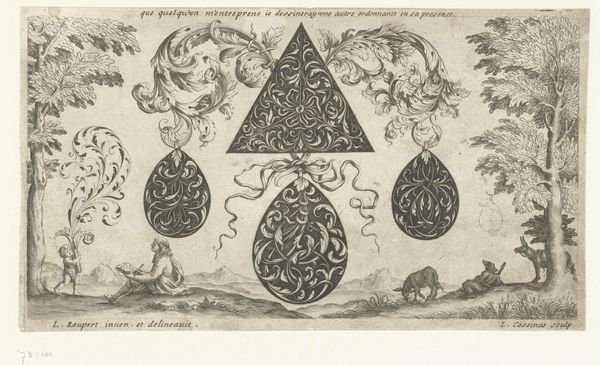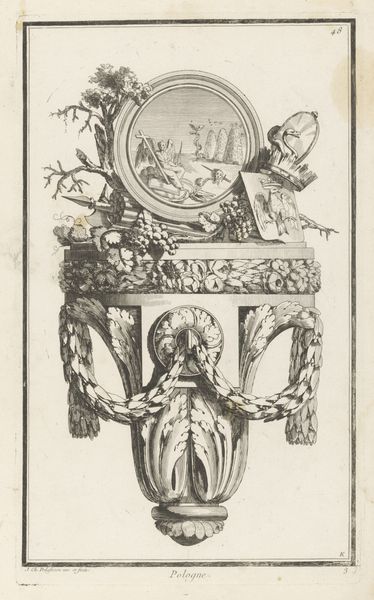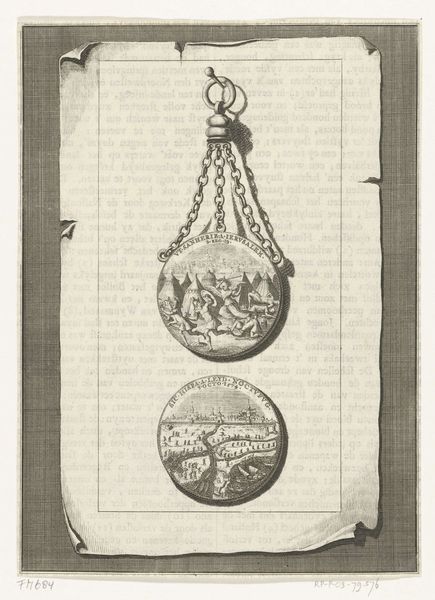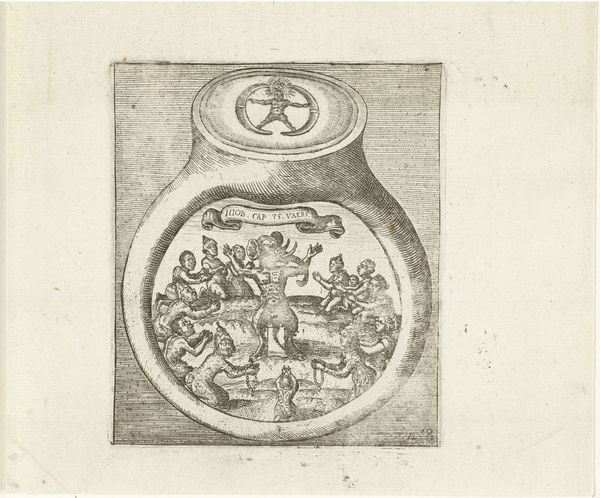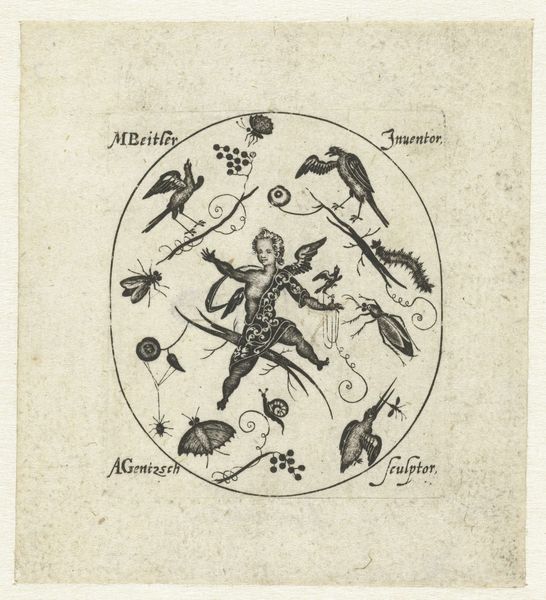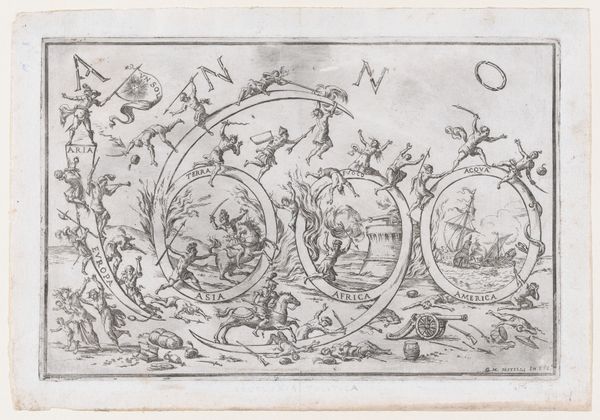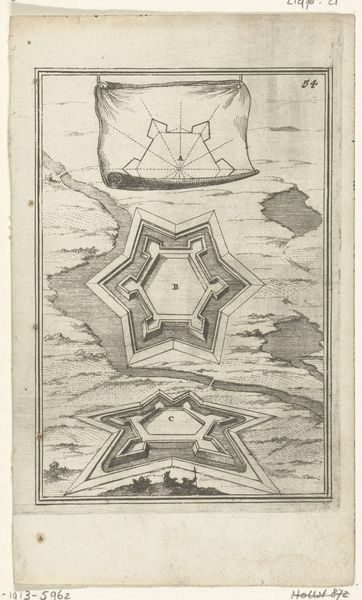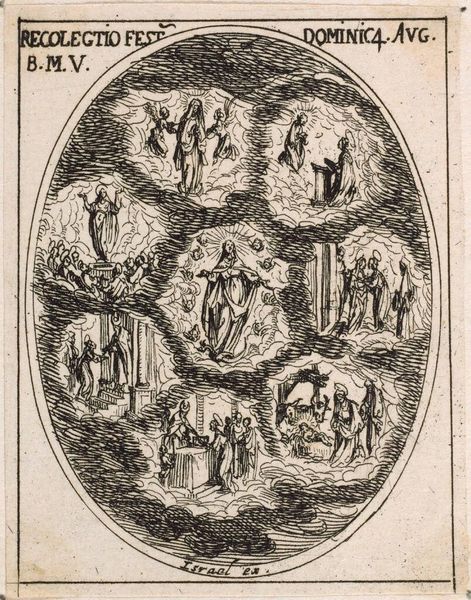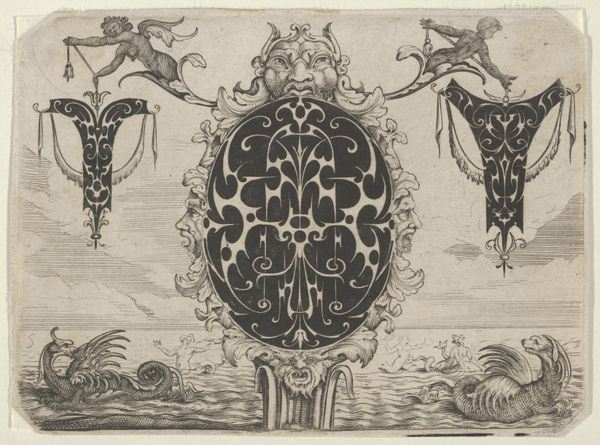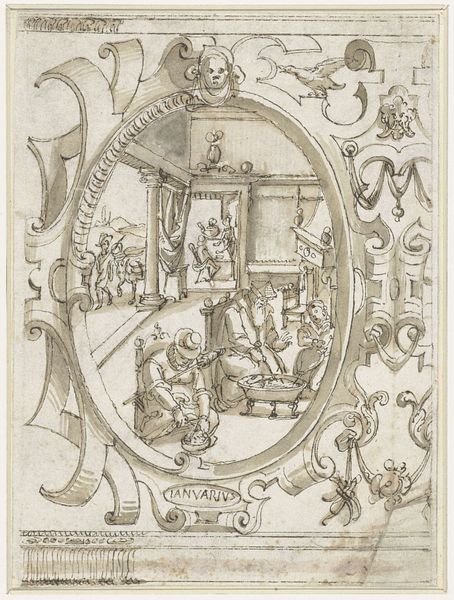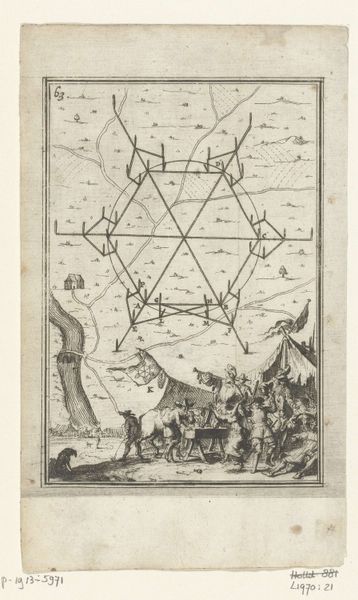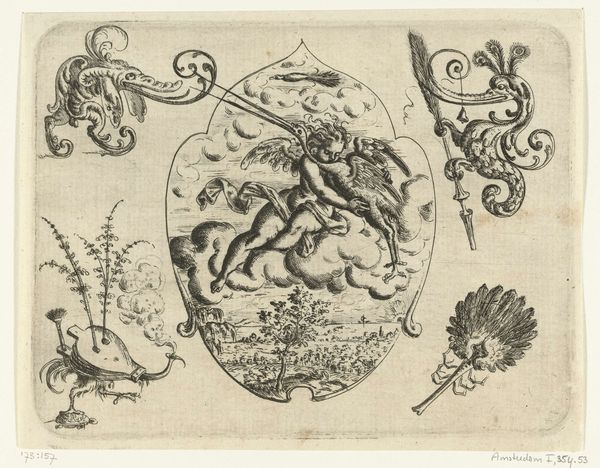
Rébus on the subject of love, a riddle depicted on drapery, below a landscape with a pyramid and two obelisks, a bust of a sphinx at bottom, an oval composition 1634 - 1644
0:00
0:00
drawing, print, etching, engraving
#
drawing
#
allegory
#
pen drawing
# print
#
etching
#
line
#
engraving
Dimensions: Sheet (trimmed to plate): 11 7/16 × 8 1/4 in. (29.1 × 20.9 cm)
Copyright: Public Domain
Curator: Immediately, I see the dense clustering of these symbolic forms! Editor: Indeed. This etching by Stefano della Bella, likely from between 1634 and 1644, is entitled "Rébus on the subject of love, a riddle depicted on drapery". You can find it at the Metropolitan Museum of Art. The artist employed engraving techniques to give the figures a detailed look. The paper choice would have had a big effect. Curator: The layering of the cupid figures alone strikes me. They repeat with arrows ready to shoot, and the landscape references at the base—a pyramid, obelisks. This all constructs such a powerful visual vocabulary. Is the material really the message, or are we looking at more abstract concepts? Editor: It's precisely both! These visual cues act like threads connecting cultural understanding over time. Look at the drapery itself; it's more than decorative; it's acting as a symbolic frame for love. Notice also that the objects pictured within all start with vowel sounds like A E I O U Curator: The contrast in visual weight between the ethereal cherubs and the hard geometry of the classical architecture, with its suggestion of ancient civilization and the implied knowledge conveyed in visual form, is amazing. I wonder if we consider too often simply WHAT something represents rather than appreciating the deliberate labor poured into such pieces. Editor: You've pinpointed the emotional heart of the work by observing that distinction, though. Aren't you curious how viewers deciphered the layers of meaning within these symbolic forms during Della Bella’s time? I get the sense this was meant to challenge intellect. The arrangement also resembles alchemical or astrological diagrams with a set of codes embedded in images for viewers. Curator: Certainly the element of skill would have carried social prestige for della Bella. To make a visual puzzle with all these little characters precisely in line is difficult and valuable because not everyone had the skill or equipment to accomplish it! Editor: Indeed! It leaves you considering how much art echoes even centuries later when artists still use symbols, inviting similar decoding processes! Curator: Well, thinking about both the symbolic weight and the practical creation really gives you two valuable lenses into understanding not only art history, but where we find significance around us in the everyday world!
Comments
No comments
Be the first to comment and join the conversation on the ultimate creative platform.
